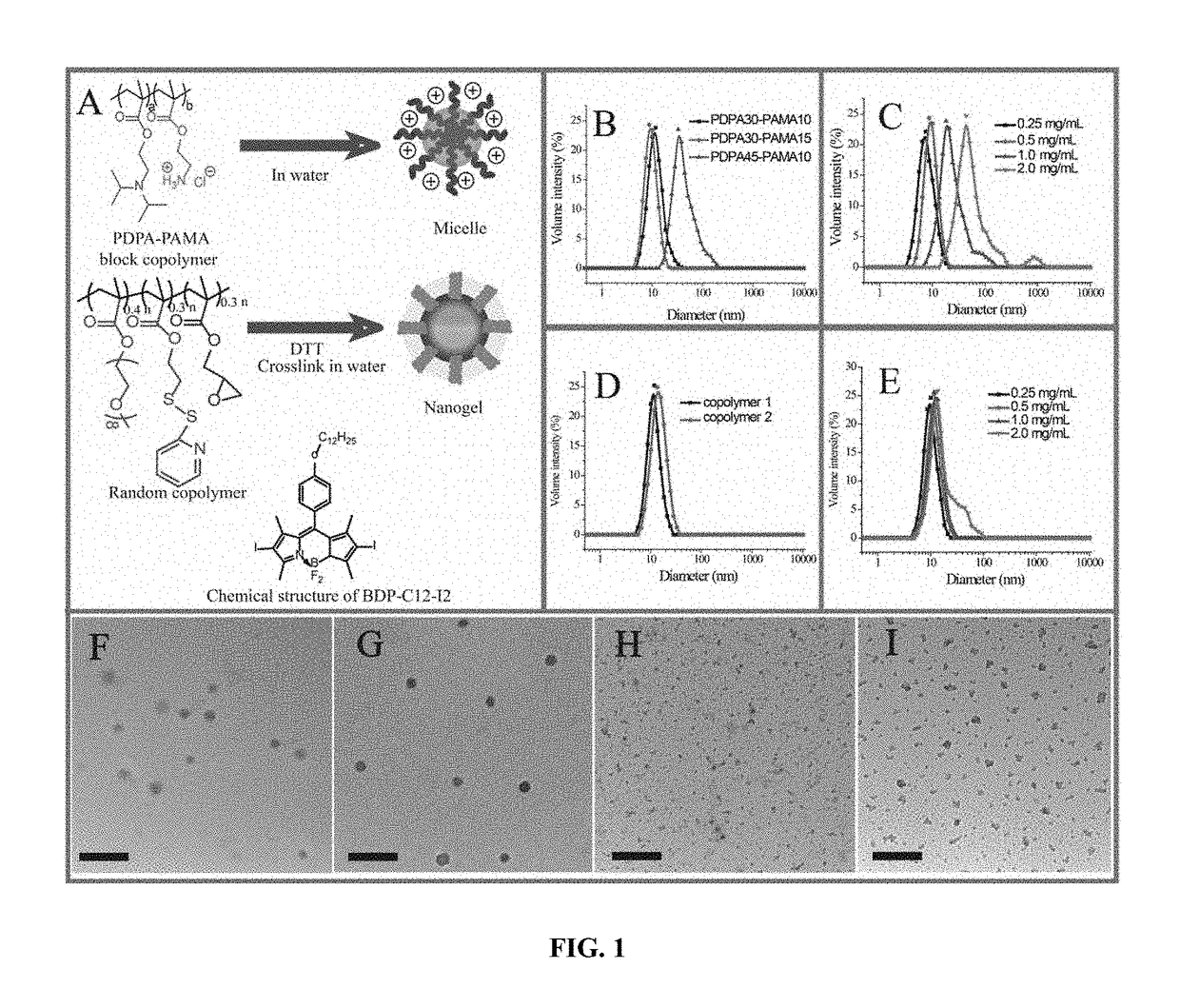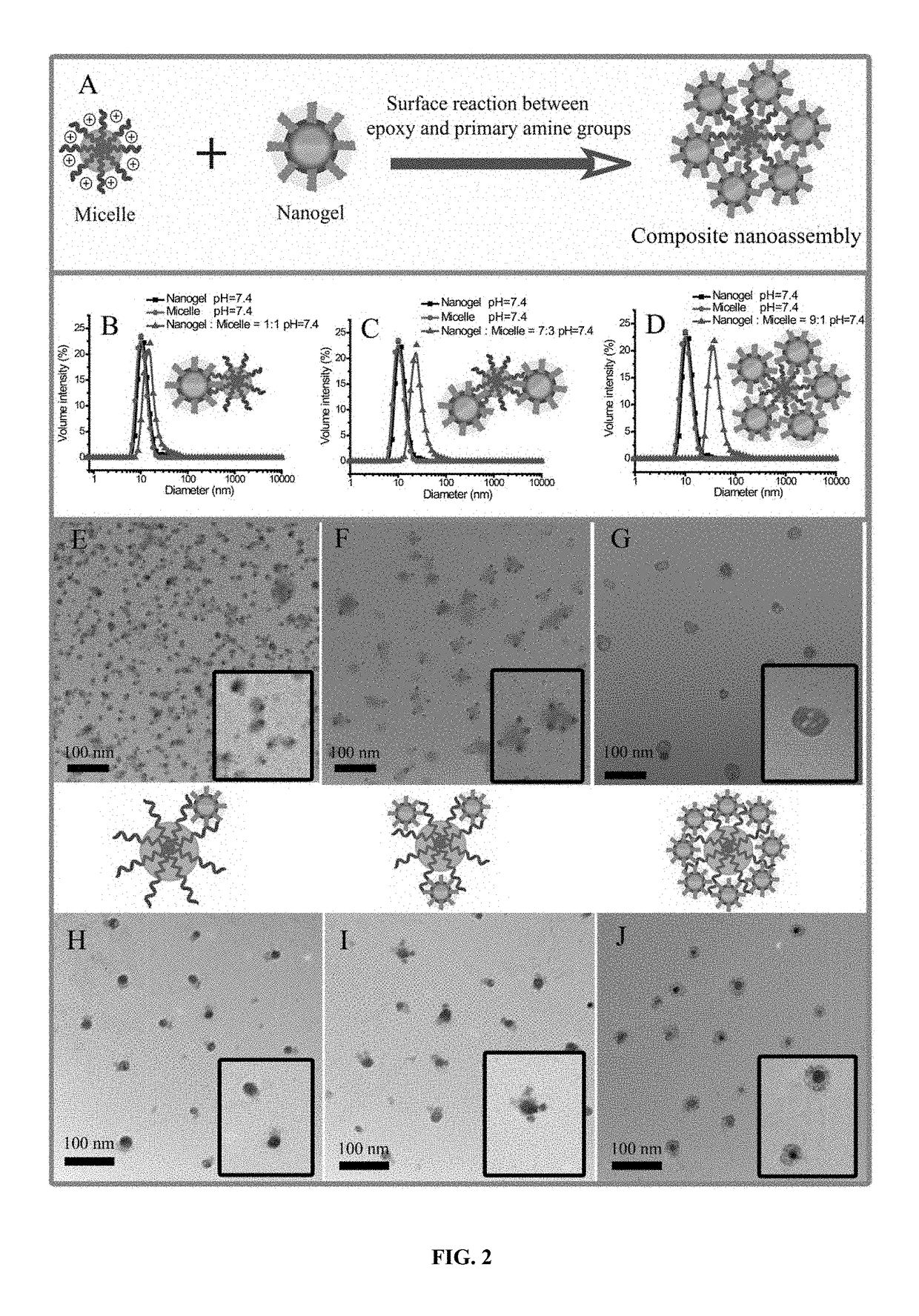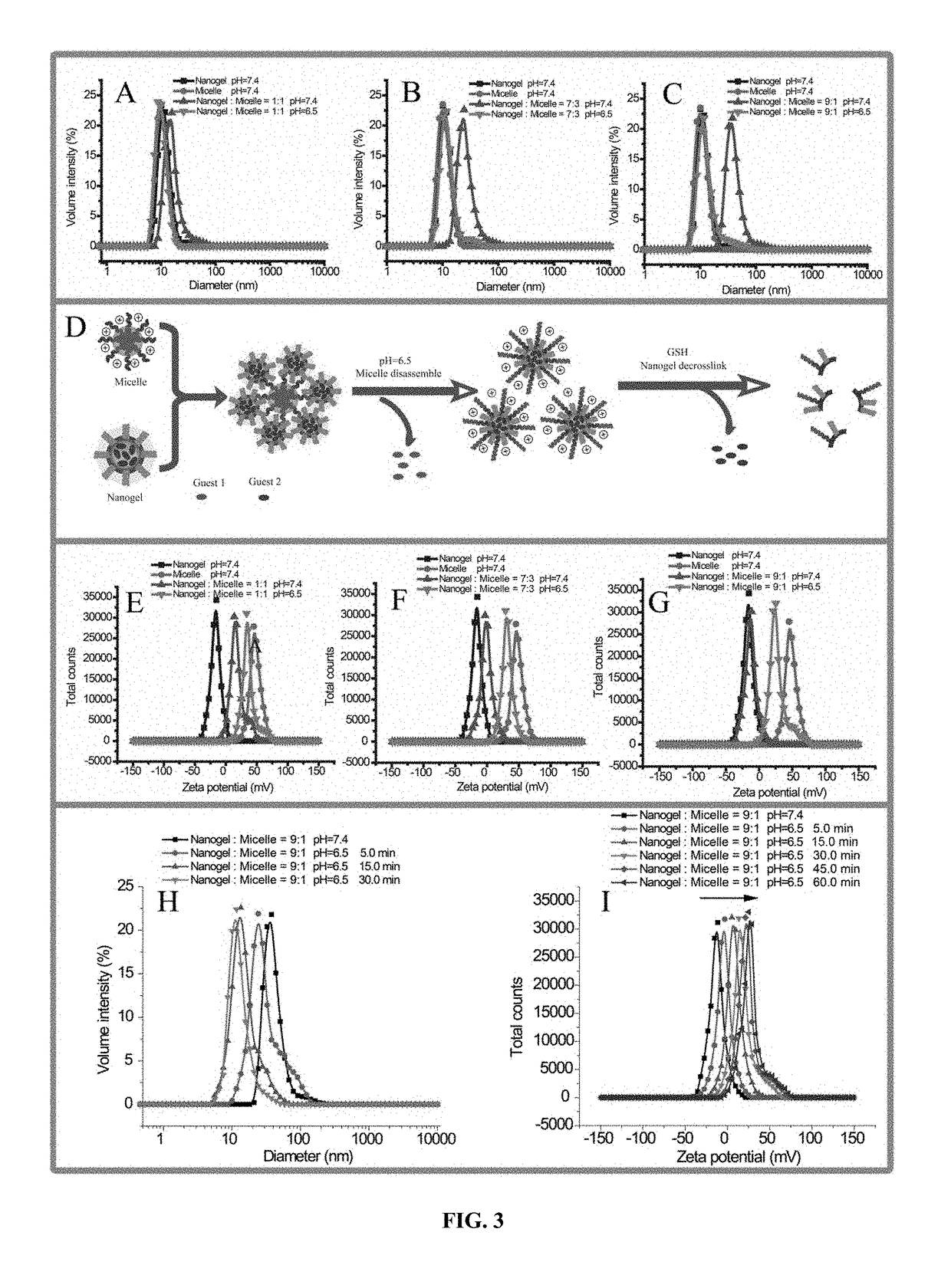Polymer-polymer composite nanoassemblies and applications thereof
a polymer-polymer composite and nanoassembly technology, applied in the direction of capsule delivery, microcapsules, drug compositions, etc., can solve the problems of affecting assembly fidelity, affecting the critical balance needed for fidelity, and extremely low release rate, so as to expand the potential functionalities attainable
- Summary
- Abstract
- Description
- Claims
- Application Information
AI Technical Summary
Benefits of technology
Problems solved by technology
Method used
Image
Examples
example i
Nanoassemblies from Polymeric Micelles and Nanogels
[0080]Poly((2-(diisopropylamino) ethyl methacrylate-b-2-aminoethyl methacrylate hydrochloride) (PDPA-b-PAMA) was used as the block copolymer (FIG. 1A), which was synthesized by atom transfer radical polymerization (ATRP). (Wang, et al. 1995 Macromolecules 28, 7901; Patten, et al. 1996 Science, 272, 866.) Examination of the supramolecular assembly formed from this amphiphilic polymer in aqueous solution using dynamic light scattering (DLS) revealed that assemblies have diameters ranging from 10 nm to 35 nm (FIG. 1B and FIG. 1C). Since certain amount of dilution would occur during the formation of composite assemblies, the block copolymer assemblies were examined before and after dilution. The assemblies had small perturbations, if any, in size after diluting the solution to half concentration.
[0081]Nanogels was prepared from the random copolymer, poly(oligoethyleneglycol monomethylether methacrylate-co-glycidyl methacrylate-co-pyridy...
example ii
les for Controlled, Targeted and Sequential Delivery of Two Agents
[0105]The intelligent composite nanocontainers of the invention, made from the combination of nanogels and micelles, allow simultaneously achieve triggered, targeted and sequential delivery of guests (FIG. 14). As shown herein, the micelles can be designed to be positively charged and disassemble at pH around 6.5, which corresponds to that in tumor cell environment. The nanogels can be designed to be redox sensitive and can be decrosslinked when encountering the reduced glutathione (GSH), which is intracellularly overexpressed in tumor cell. It is a common view that both normal cells and tumor cells can absorb the positively charged nanoparticles fast and thereby resulting in an nonspecific cell uptake.
[0106]For example, the micelles may be coated with neutral (or slightly negatively charged) nanogels via surface chemical reaction to shield their positive charges. When encountering weak acid target sites (such as tumo...
PUM
 Login to View More
Login to View More Abstract
Description
Claims
Application Information
 Login to View More
Login to View More - R&D
- Intellectual Property
- Life Sciences
- Materials
- Tech Scout
- Unparalleled Data Quality
- Higher Quality Content
- 60% Fewer Hallucinations
Browse by: Latest US Patents, China's latest patents, Technical Efficacy Thesaurus, Application Domain, Technology Topic, Popular Technical Reports.
© 2025 PatSnap. All rights reserved.Legal|Privacy policy|Modern Slavery Act Transparency Statement|Sitemap|About US| Contact US: help@patsnap.com



